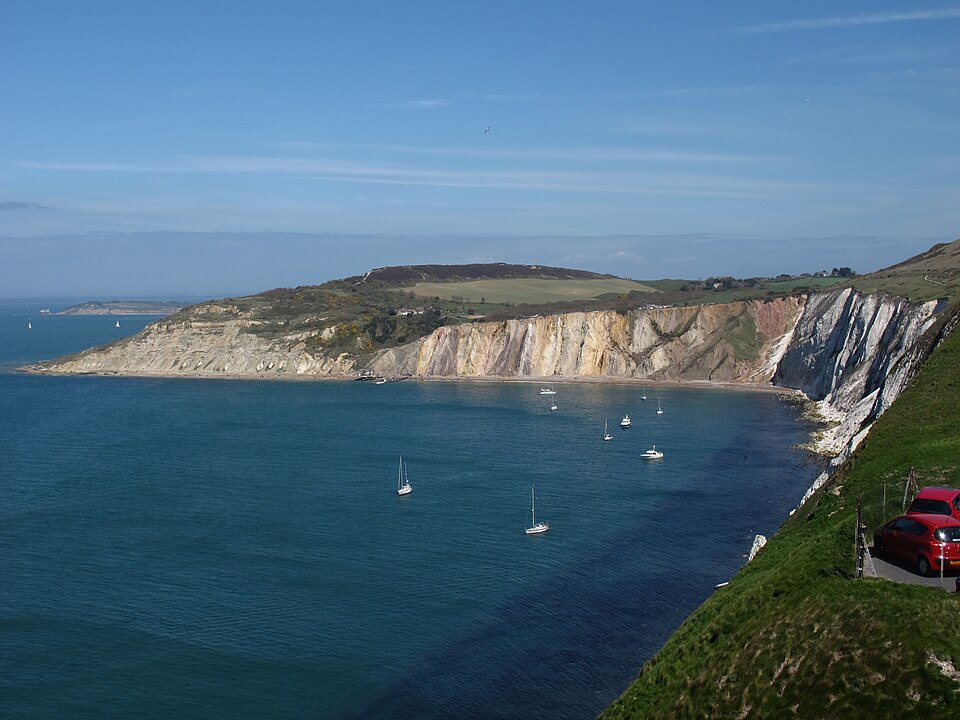Nestled on the western tip of the Isle of Wight, Alum Bay is renowned for its stunning multi-coloured sand cliffs and dramatic coastal scenery. The bay’s rich history, spanning centuries and entwined with geology, Victorian tourism, and local industry, still draws tourists today.
Ancient Origins: Nature’s Masterpiece
Alum Bay’s story begins millions of years ago. The vividly coloured sands—ranging from deep reds to bright yellows—owe their existence to layers of oxidised minerals laid down during the Tertiary period. Over time, shifting geological forces tilted these layers, creating the iconic striped cliffs that we see today.
The bay’s name, “Alum”, originates from the alum deposits once extracted here. Alum, a compound used in dyeing and tanning leather, was a valuable commodity from the Roman era through the 19th century.
Smugglers, Sailors, and Storms
In the 18th and early 19th centuries, the Isle of Wight’s rugged coastline, including Alum Bay, was a haven for smugglers. Hidden coves and treacherous rocks provided both protection and peril. Shipwrecks were not uncommon, and tales of lost cargo and daring rescues became part of local folklore.
The Victorian Era: Tourism Takes Hold
Alum Bay underwent a significant transformation during the Victorian era. With the rise of seaside holidays, the Isle of Wight became a fashionable retreat. Queen Victoria herself resided at Osborne House, lending royal approval to the island’s attractions.
Alum Bay’s sands, with their unique hues, became a must-see. Victorians collected the coloured sands in glass bottles as souvenirs—a tradition that continues to this day. The construction of the Needles Battery (a military fortification) in the 1860s brought even more visitors, eager to marvel at both the natural beauty and military engineering.
The Needles and Maritime Landmarks
Just offshore from Alum Bay are the famous Needles—three dramatic chalk stacks rising from the sea. These striking formations, along with the iconic Needles Lighthouse (operational since 1859), have become enduring symbols of the Isle of Wight. The lighthouse itself was built to improve maritime safety following numerous shipwrecks along the treacherous coast.
Alum Bay Today
Today, Alum Bay is a vibrant tourist destination, celebrated for its natural beauty, colourful sands, and panoramic views. Visitors can reach the bay via a chairlift, explore the nearby Needles Landmark Attraction, or take a boat trip to view the cliffs and stacks up close. While sand collection is now controlled to protect the cliffs, the tradition lives on through curated displays and souvenirs.
Preserving a Unique Heritage
Alum Bay is more than a scenic spot—it is a living history, shaped by nature, industry, and the people who have treasured its beauty for generations. Its story is a vivid reminder of the power of time, tide, and human curiosity.
Discover more from TheHubBuzz.com
Subscribe to get the latest posts sent to your email.

